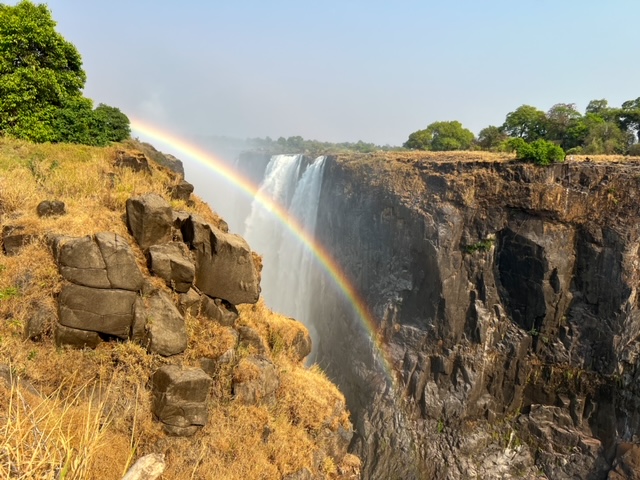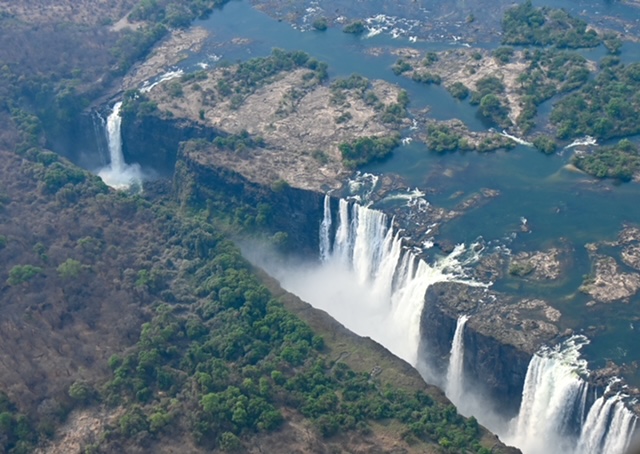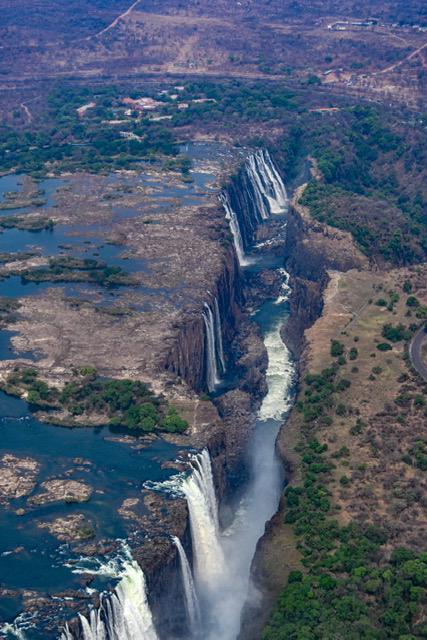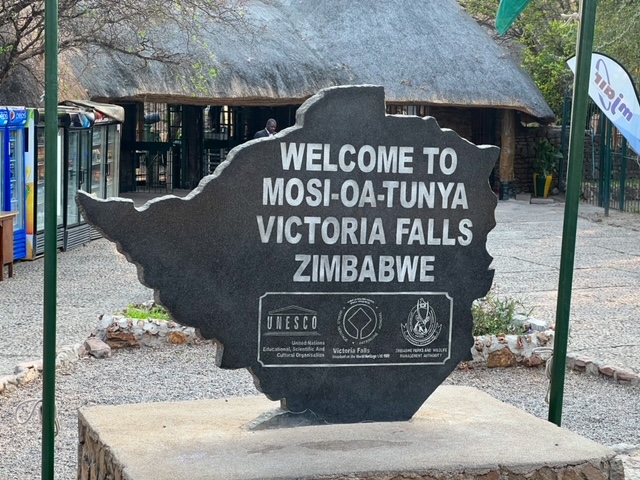Sabbatical Notes from Pastor Stephen: Victoria Falls
October 15, 2022




Today I went to Victoria Falls, but it’s known locally by other names in the languages of the various tribes such as Mosi-oa-Tunya meaning “the smoke that thunders.” Chongwe/Seongo is another historical tribal name meaning “the place of the rainbow.”
It is clear from archaeological sites around the Victoria Falls that the area has been occupied from around three million years ago. Stone artifacts from that time have been found as well as items from the Middle and Late Stone Age.
Stone Age inhabitants were eventually displaced by the Khoisan, who were hunter-gatherers that used iron implements. Later, Bantu people moved into the area and the Batoka tribes became dominant. Over time other tribes arrived including the Matabele and the Makololo. Descendants of these tribes are still living in the area today.
Members of the Makololo tribe were the ones who actually took the intrepid explorer David Livingstone, in dugout canoes, to see the falls. Livingstone, a Scottish missionary, was on a journey to find a route to the East Coast of Africa. Between 1852 and 1856 he explored the Upper Zambezi through to the river mouth. The falls were well known to local tribes and it was Chief Sekeletu who escorted Livingstone on November 17, 1855 to the viewing site.
Livingstone, on seeing the massive waterfall, named it after the British Monarch at the time, Queen Victoria. Later he recorded in his journal these famous words:
‘No one can imagine the beauty of the view from anything witnessed in England. It had never been seen before by European eyes; but scenes so lovely must have been gazed upon by angels in their flight.
David Livingstone
David Livingstone is known as the first European to see Victoria Falls. He returned again in 1860 for a more comprehensive study and was accompanied by John Kirk, a fellow explorer. Other European visitors that followed included a Portuguese explorer, and Emil Holub, a Czech explorer who made the first detailed plan of the area. Also British artist Thomas Baines, who painted some of the earliest pictures of the falls.
But was Livingstone the first European to see the falls? Probably not. Portuguese explorers came through on their way to Mozambique quite often, they just never recorded what they saw or told anyone. For right or wrong, credit often isn’t given unless you become a witness and share what you’ve seen, heard, or experienced. The local indigenous people knew of the falls, but that knowledge never spread beyond their local borders. The local tribes still give Livingstone a lot of credit because he helped make their falls famous.
That gets me thinking about the importance of sharing our own experiences. I hear so many Christians say that they don’t talk about their faith because it’s a personal thing. Well, that’s the exact opposite of what the Bible says. Christianity was never meant to be done alone. It’s not personal; it’s communal.
We are supposed to share the good news. We are supposed to report what we’ve seen, heard, and experienced of God or it doesn’t really matter. The good news of the Gospel is too big and too wonderful not to share. That’s what Livingstone thought about the falls. He had to report back and share what he’d seen. It was too good to keep to himself. That’s how we should feel about the Gospel, about our faith, and church. It doesn’t mean we are pushy or forceful, but we need to share. We need to talk about experiences of forgiveness and reconciliation. The world needs to know. Because once we know the good news, once we know peace and reconciliation is possible, then we are more likely to go and search for it ourselves and find ourselves at that place of peace.
Once word got out about the falls, Anglo traders started to arrive in increasing numbers and a rustic settlement was built on the riverbank (now Zambia) called Old Drift, the crossing place for the Zambezi River prior to 1905.
Visitors from what was the Transvaal region of South Africa began to make their way by ox wagon, on horseback or on foot, to see Victoria Falls. However, malaria was a serious problem in Old Drift causing the settlement to be relocated to its present site, now the town of Livingstone, Zambia.
Victoria Falls really came into its own when Cecil John Rhodes, a politician and entrepreneur ,commissioned the building of the now-famous landmark Victoria Falls Bridge, to cross the Zambezi River. The Victoria Falls bridge was completed in 1905 and became a major transport route for road and rail traffic, trade and enterprise in Africa. That bridge is still standing today and is used daily by cars, trucks, and pedestrians crossing from Zimbabwe to Zambia. I also made the trek over the historic bridge.
The falls are magnificent, and we went during the low water period. When it’s high water you can barely see anything through the mist. God’s world is truly amazing. There’s so much to see and learn and experience. There’s so much worth sharing and reporting and so others want to experience the majesty of creation. I’ll talk about that more tomorrow.